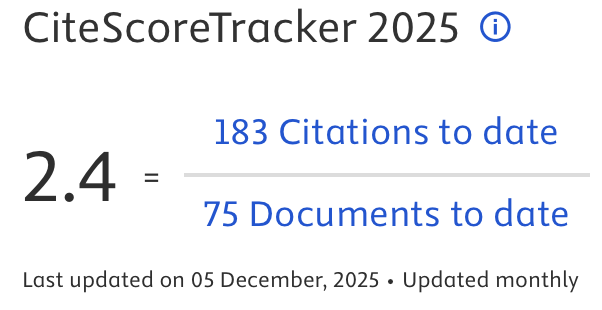Konsep Jiwa dan Pengaruhnya dalam Kepribadian Manusia (Studi atas Tafsi>r al-Mishba>h Karya Quraish Shihab)
DOI:
https://doi.org/10.14421/qh.2016.1701-03Abstract
This article attempts to explore Qur’anic notion on soul and its influence on human personality as Quraish Shihab constructed in his Tafsi>r al-Mishba>h. Using psychological and semantical approaches, it parallelizes psychological with Qur’anic perspectives on the concept of soul. Then, it examines how the soul influences human personality. This paper concludes the following. First, Quraish Shihab’s view of the concept of soul can be understood by explaining his thought on the basic concept of human, psychical structure, and human behavioral motivation. Quraish Shihab said that humans’ basic character is kindness. The psychical structure consists of al-fit}rah, al-nafs, al-qalb, al-ru>h, al-‘aql. Then, human behavioral motivation is to complete their physical/biological needs and/or spiritual needs. Second, the soul influences and shapes human personality through integration process among those psychical dimensions.Key Words: konsep jiwa, fit}rah, nafs, qalb, ru>h, ‘aql, integrasi, kepribadian, dan paralelisasi.
 Abstract viewed: 2316 times
|
Abstract viewed: 2316 times
|
 PDF downloaded = 32249 times
PDF downloaded = 32249 times
References
Baharuddin. Paradigma Psikologi Islami. Yogyakarta: Pustaka Pelajar, 2007.
Matta, Anis. Membentuk Karakter Muslim. Jakarta: Shout Al-Haq Press, 2001.
Mujib, Abdul. Kepribadian dalam Psikologi Islam. Jakarta: PT RajaGrafindo Persada, 2007.
M. Dawam Rahardjo, Ensiklopedi Al-Qur’ân, hlm. 266-267.
Rahardjo, M. Dawam. Ensiklopedi Al-Qur’a>n: Tafsir Sosial Berdasarkan Konsep-konsep Kunci. Jakarta: Paramadina, 2002.
Ritonga, A. Rahman. “Nafs” dalam Sahabuddin (ed.). Ensiklopedia Al-Qur’an: Kajian Kosakata. II. Jakarta: Lentera Hati, 2007.
Shihab, M. Quraish. Dia Di Mana-mana: “Tangan” Tuhan Di Balik Setiap Fenomena. Jakarta: Lentera Hati, 2004.
--------. Lentera Hati: Kisah dan Hikmah Kehidupan. Bandung: Mizan, 2005.
--------. “Membumikan” Al-Qur’an: Fungsi dan Peran Wahyu dalam Kehidupan Masyarakat. Bandung: Mizan, 1995.
--------. Secercah Cahaya Ilahi. Bandung: Mizan, 2007.
--------. Tafsi>r Al-Mishba>h: Pesan, Kesan, dan Keserasian al-Qur’an. I. Jakarta: Lentera Hati, 2002.
--------. Tafsi>r Al-Mishba>h: Pesan, Kesan, dan Keserasian al-Qur’an. II. Jakarta: Lentera Hati, 2002.
--------. Tafsi>r Al-Mishba>h: Pesan, Kesan, dan Keserasian al-Qur’an. III. Jakarta: Lentera Hati, 2002.
--------. Tafsi>r Al-Mishba>h: Pesan, Kesan, dan Keserasian al-Qur’an. VI. Jakarta: Lentera Hati, 2002.
--------. Tafsi>r Al-Mishba>h: Pesan, Kesan, dan Keserasian al-Qur’an. X. Jakarta: Lentera Hati, 2002.
--------. Tafsi>r Al-Mishba>h: Pesan, Kesan, dan Keserasian al-Qur’an. XI. Jakarta: Lentera Hati, 2002.
--------. Wawasan Al-Quran: Tafsir Maudhu’i atas Pelbagai Persoalan Umat. Bandung: Mizan, 2006.
Downloads
Published
How to Cite
Issue
Section
License
Publishing your paper with Jurnal Studi Ilmu-ilmu al-Qur'an dan Hadis means that the author or authors retain the copyright in the paper. Jurnal Studi Ilmu-ilmu al-Qur'an dan Hadis uses license CC-BY-NC-ND or an equivalent license as the optimal license for the publication, distribution, use, and reuse of scholarly works. This license permits anyone to copy and redistribute the material in any medium or format and must give appropriate credit, provide a link to the license, and indicate if changes were made. If you remix, translate, transform or build upon the material you may use it for private use only and not for distribution. Jurnal Studi Ilmu-ilmu al-Qur'an dan Hadis granted an exclusive non-commercial reuse license by the author(s), but the author(s) are able to put the paper onto a website, distribute it to colleagues, give it to students, use it in your thesis, etc, so long as the use is not directed at a commercial advantage or toward private monetary gain. The author(s) can reuse the figures and tables and other information contained in their paper published by Jurnal Studi Ilmu-ilmu al-Qur'an dan Hadis in future papers or work without having to ask anyone for permission, provided that the figures, tables, or other information that is included in the new paper or work properly references the published paper as the source of the figures, tables or other information, and the new paper or work is not direct at a private monetary gain or commercial advantage.
Jurnal Studi Ilmu-ilmu al-Qur'an dan Hadis journal Open Acces articles are distrubuted under the Creative Commons Attribution-NonCommercial-NoDerivatives 4.0 International (CC BY-NC-ND 4.0). Article can be read, copy and redistribute the material ini any medium or format under the following conditions:
Attribution — You must give appropriate credit, provide a link to the license, and indicate if changes were made. You may do so in any reasonable manner, but not in any way that suggests the licensor endorses you or your use.
NonCommercial — You may not use the material for commercial purposes.
NoDerivatives — If you remix, transform, or build upon the material, you may not distribute the modified material.









